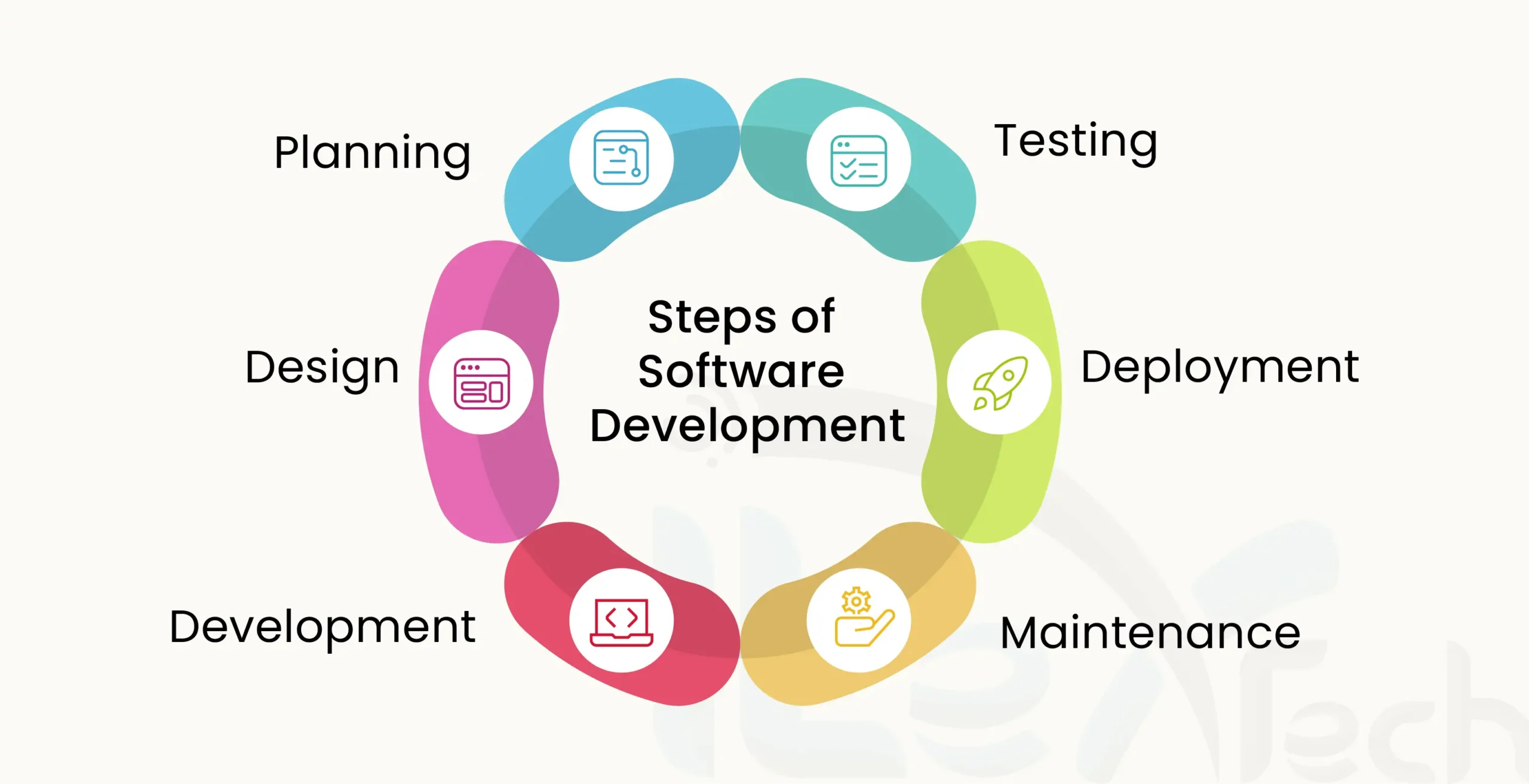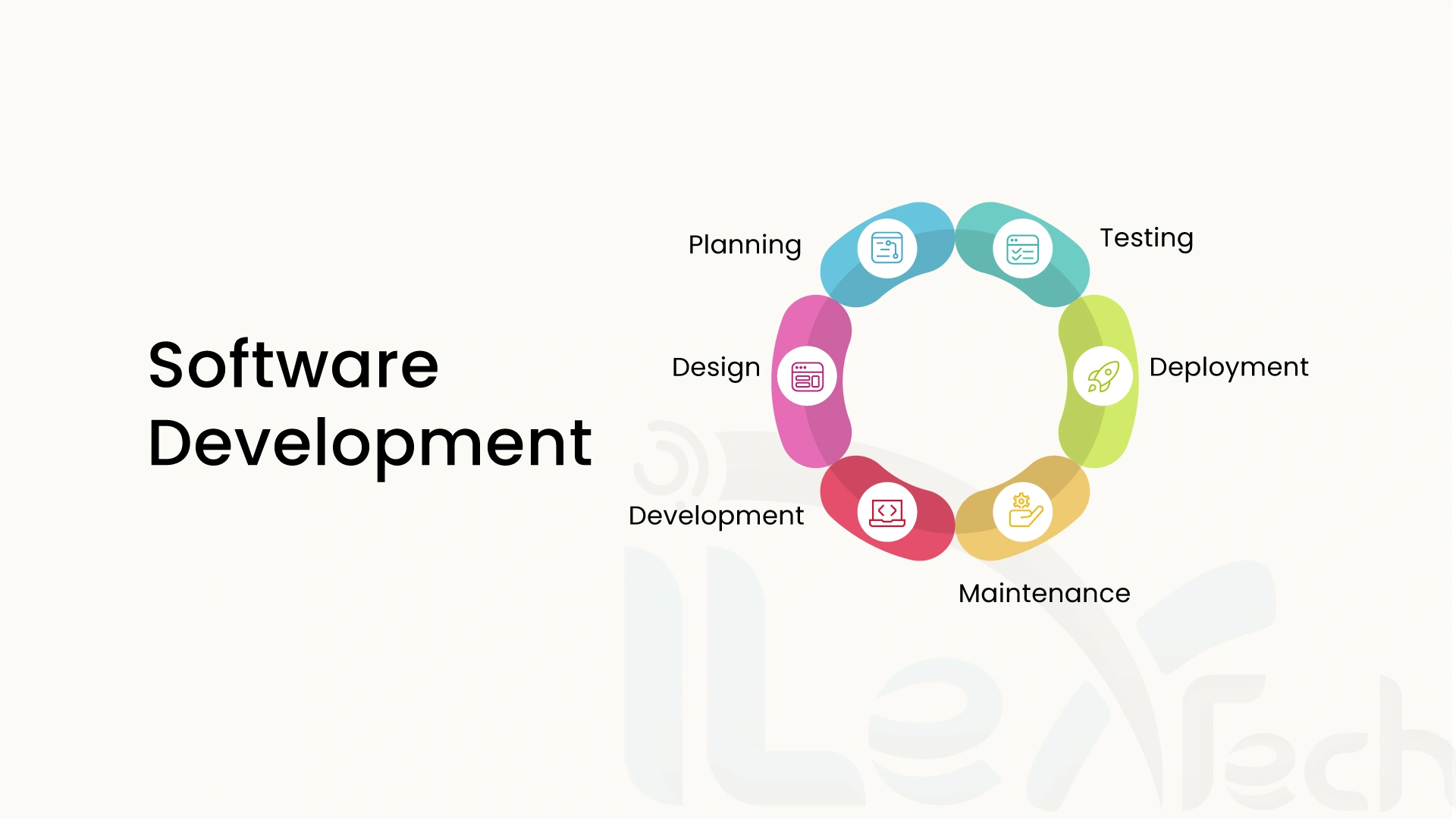In today’s technology-driven world, software development is at the heart of almost every innovation. From the apps on our smartphones to the software that powers businesses, software development impacts our daily lives in countless ways. Understanding what software development is, how it works, and its importance can give us a clearer view of the technology shaping our future. This guide will help you understand the definition, types, steps, features, applications, tools, and trends in software development, as well as its role in our lives.
Definition of Software Development
Software development is the process of designing, building, testing, and maintaining software applications or systems. It involves turning an idea or need into a functional digital product that performs specific tasks. In fact, this can range from simple applications to complex systems that manage data and automate processes.
Software development life cycle includes various stages, starting with planning and ending with deploying the product. Furthermore, developers use programming languages, tools, and methodologies to create software that meets the intended purpose. Software development is the craft of making computer programs that people use for different needs.

Types of Software Development
Software development comes in many forms, each serving unique purposes. Here are the main types of software development for you:
1. Web Development
Web development is all about creating websites and web applications that people can use in the browser. Web developers handle the front end (how it looks to the people) and the back-end server side to make good websites that are interactive for the users.
2. Mobile Development
This means developing software for mobile phones and personal tablets. Mostly, their target operating systems are Android and iOS. Plus. the users download them from application stores or stores.
3. Desktop Development
Desktop development refers to software created for desktops or laptops. Unlike web or mobile apps, desktop software is installed directly on a computer, like Microsoft Word or Photoshop, which users access offline.
4. Embedded Systems Development
In embedded systems development, software is developed for specific hardware apparatus. This kind of software applies to smart TVs, medical machinery, or industrial machines where software has close cooperation with the hardware.
5. Game Development
Game development is simply making video games for computers, consoles, and mobiles. Game developers use various engines and tools to bring out fun and exciting activities to the players.
6. Artificial Intelligence (AI) Development
AI development creates software that can mimic human intelligence, such as learning, reasoning, and problem-solving. Applications include virtual assistants, recommendation systems, and autonomous vehicles, making AI a rapidly growing area in software development.
7. Data Science and Analytics Development
Data science and analytics involve creating software that collects, processes, and analyzes large datasets. This type of software helps businesses make data-driven decisions by extracting insights from vast amounts of information.
8. Enterprise Software Development
Enterprise software development creates software for large organizations to manage operations, communications, and data. Examples include customer relationship management (CRM) and enterprise resource planning (ERP) systems, which streamline complex business processes.
Each type of software development serves a different purpose, and developers often specialize in one area based on their skills and interests.
Steps of Software Development
The software development process is structured to ensure the final product meets user needs. So, here are the key steps involved that you need to follow to develop a software:
1. Planning and Analysis
Indeed, the first step is to understand the requirements of the software. This involves talking to stakeholders to define the project’s goals, features, and target audience. Planning helps create a roadmap for the development process.
2. Design
In the design phase, developers create blueprints or prototypes for the software. This includes designing the user interface, database structure, and system architecture. The design phase sets the foundation for how the software will look and work.
3. Development
During this stage, developers write code to bring the software to life. They use programming languages and tools to build the front end, back end, and any additional components. The development phase involves turning design concepts into working features.
4. Testing
Once the software is built, it goes through rigorous testing to identify any bugs, errors, or issues. Software testing ensures the software runs smoothly and meets quality standards before it’s released to users.
5. Deployment
After successful testing, the software is deployed to a live environment where users can access it. Deployment may involve releasing the software on app stores, websites, or directly on user devices.
6. Maintenance and Updates
Even after deployment, software requires maintenance to fix bugs, improve performance, and add new features. Regular updates help the software stay relevant, secure, and compatible with changing technology.
By following these steps, you can create functional and reliable software that aligns with user expectations.
Features of Software Development
Certain features are essential for successful software development. Here are some of the most important ones:
1. Usability
Good software is easy to use and intuitive for the user. Usability focuses on making the interface user-friendly so users can navigate the software without confusion.
2. Reliability
Reliability means the software performs consistently without crashing or encountering errors. Reliable software provides a stable experience, which is essential for user satisfaction.
3. Scalability
Scalable software can grow with the user’s needs. Whether it’s handling more data, adding more users, or expanding functionality, scalable software adapts to growth without compromising performance.
4. Performance
Performance refers to how quickly the software completes tasks. Efficient software responds promptly to user commands, enhancing the overall user experience.
5. Security
Security is crucial, especially for software that handles sensitive data. Secure software includes features like data encryption, user authentication, and regular application security updates to protect against cyber threats.
6. Compatibility
Compatibility ensures the software works across different devices, operating systems, and browsers. It allows users to access the software on multiple platforms, enhancing its versatility.
These features help determine the software’s quality, reliability, and user experience, making them fundamental to software development.
Applications of Software Development
Software development has diverse applications across industries. Here are some examples of where software development plays a key role:
- Healthcare – Software manages patient records, diagnoses diseases, and supports telemedicine, making healthcare more efficient and accessible.
- Finance – Banks and financial institutions use software for online banking, mobile transactions, and fraud detection, enhancing convenience and security.
- Education – Educational software facilitates online learning, virtual classrooms, and course management, providing flexible learning options.
- Retail – E-commerce platforms, point-of-sale systems, and inventory management software support retail operations and customer service.
- Transportation – Software powers GPS navigation, traffic management, and ride-sharing apps, improving travel and logistics.
- Entertainment – Streaming services, gaming apps, and content creation tools offer entertainment and creative outlets for users worldwide.
Software development has applications in nearly every field, making it a valuable skill set in today’s job market.
Tools and Latest Trends in Software Development
Software development relies on various tools and is always evolving with new trends. Here are some of the most popular tools and trends in the industry that you need to check:
Software Development Tools
- Integrated Development Environments (IDEs) – IDEs like Visual Studio, IntelliJ, and Eclipse provide a workspace for writing, testing, and debugging code.
- Version Control Systems – Tools like Git and GitHub allow developers to track changes, collaborate, and manage different versions of code.
- Project Management Software – Tools like Jira, Trello, and Asana help teams organize tasks, set deadlines, and track project progress.
- Testing Tools – Automated testing tools like Selenium and JUnit allow developers to run tests to ensure software quality and performance.
Trends
Artificial Intelligence (AI) – AI in software development allows for automation, personalized experiences, and data-driven decision-making.
- Cloud Computing – Cloud platforms like AWS, Google Cloud, and Microsoft Azure support scalable, on-demand software solutions.
- Low-Code/No-Code Development – These platforms allow users to build applications with minimal coding, making software development accessible to more people.
- Cybersecurity Emphasis – As cyber threats grow, developers focus more on secure coding practices and regular security updates.
These tools and trends help developers work efficiently, stay updated, and create innovative solutions.
Role of Software Development in Our Life
Software development has a profound impact on our daily lives, simplifying tasks and offering new ways to connect, learn, and create. Building a career in software development is becoming very popular nowadays. Here’s how it plays a role in our world:
- Improving Communication – Apps like WhatsApp, Zoom, and email platforms allow us to communicate instantly, no matter the distance.
- Enhancing Convenience – From online banking and shopping to food delivery, software applications make everyday activities faster and more convenient.
- Supporting Education – Educational software and e-learning platforms make education accessible to anyone with an internet connection, empowering people worldwide.
- Boosting Entertainment – Streaming services, social media, and gaming platforms provide entertainment and a creative outlet for millions of people.
- Advancing Healthcare – Medical software supports diagnostics, patient care, and data management, making healthcare more efficient and accessible.
- Driving Innovation – Software development fuels innovation in fields like AI, renewable energy, and autonomous vehicles, shaping the future.
- Facilitating Remote Work – Collaboration tools and cloud software enable people to work from anywhere, giving companies flexibility and efficiency.
Software development has transformed how we live, work, and play, touching nearly every aspect of modern life.
Take advantage of top-tier software development by partnering with skilled teams like Ilextech. Our experts will turn your vision into a powerful, high-quality solutions, tailored precisely to your needs. We will your software project to life with innovation, reliability, and precision. Start building your success story today with us!
FAQs
What does a software developer do?
A software developer designs, builds, and maintains software applications, working on both front-end and back-end systems. They code, test, and debug programs to ensure they meet user and business needs.
What are the skills required to become a software developer?
Key skills for a software developer include programming languages (e.g., Python, Java), problem-solving, debugging, and knowledge of software development methodologies. Strong logical thinking and collaboration are also crucial.
Is software development an IT job?
Yes, software development is an IT job focused on creating and managing software applications. It falls under the broader IT field, involving technology-driven problem-solving and innovation.



